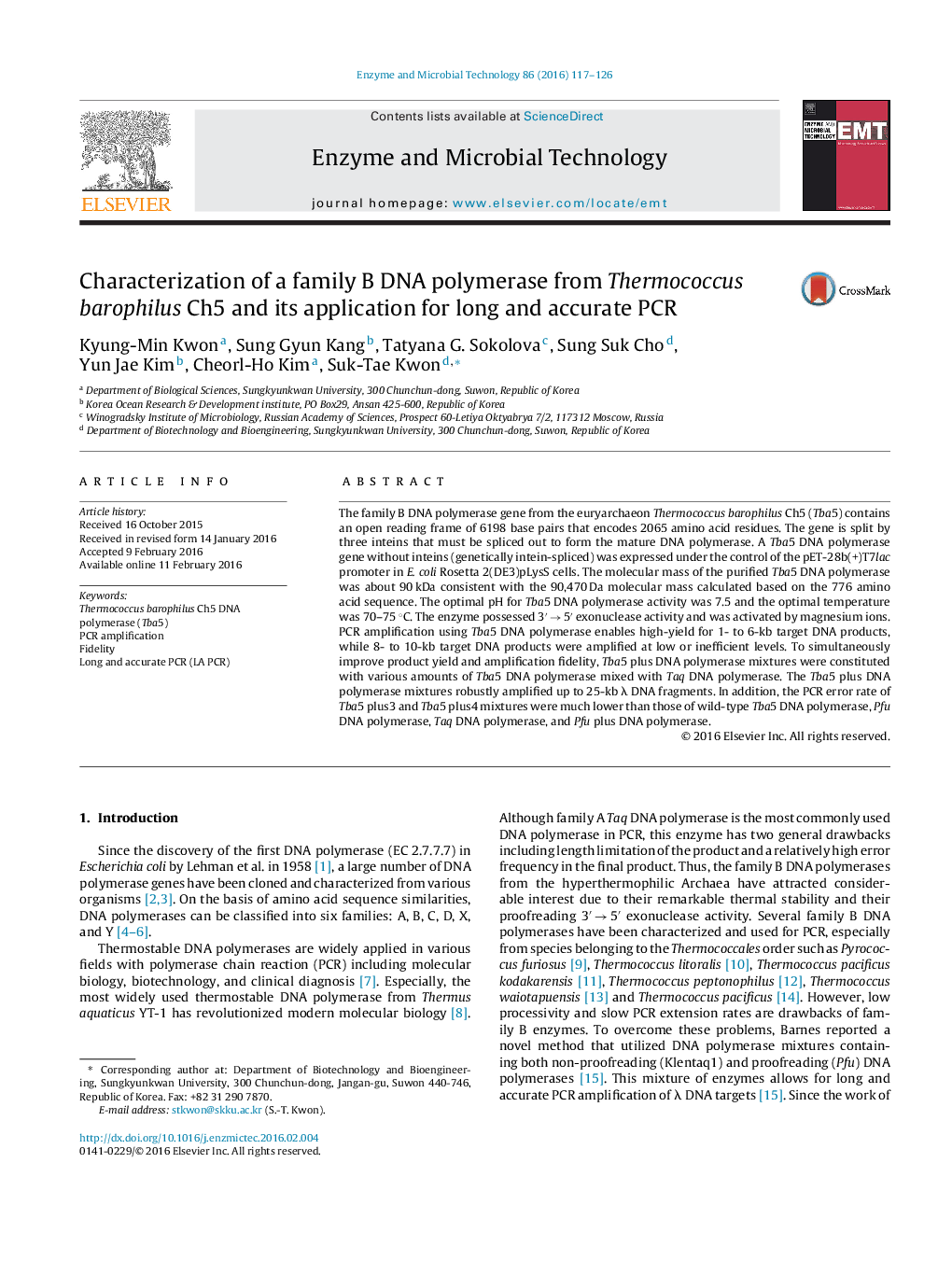| Article ID | Journal | Published Year | Pages | File Type |
|---|---|---|---|---|
| 16804 | Enzyme and Microbial Technology | 2016 | 10 Pages |
•Tba5 DNA polymerase gene from Thermococcus barophilus Ch5 was expressed in E. coli.•The characterization and PCR application of Tba5 DNA polymerase are described.•To improve fidelity and PCR efficiency, Tba5 plus DNA polymerases were constituted.•Tba5 plus DNA polymerase robustly amplified λ DNA fragments up to 25-kb in length.•The PCR error rate of the Tba5 plus4 was much lower than that of the wild-type alone.
The family B DNA polymerase gene from the euryarchaeon Thermococcus barophilus Ch5 (Tba5) contains an open reading frame of 6198 base pairs that encodes 2065 amino acid residues. The gene is split by three inteins that must be spliced out to form the mature DNA polymerase. A Tba5 DNA polymerase gene without inteins (genetically intein-spliced) was expressed under the control of the pET-28b(+)T7lac promoter in E. coli Rosetta 2(DE3)pLysS cells. The molecular mass of the purified Tba5 DNA polymerase was about 90 kDa consistent with the 90,470 Da molecular mass calculated based on the 776 amino acid sequence. The optimal pH for Tba5 DNA polymerase activity was 7.5 and the optimal temperature was 70–75 °C. The enzyme possessed 3′ → 5′ exonuclease activity and was activated by magnesium ions. PCR amplification using Tba5 DNA polymerase enables high-yield for 1- to 6-kb target DNA products, while 8- to 10-kb target DNA products were amplified at low or inefficient levels. To simultaneously improve product yield and amplification fidelity, Tba5 plus DNA polymerase mixtures were constituted with various amounts of Tba5 DNA polymerase mixed with Taq DNA polymerase. The Tba5 plus DNA polymerase mixtures robustly amplified up to 25-kb λ DNA fragments. In addition, the PCR error rate of Tba5 plus3 and Tba5 plus4 mixtures were much lower than those of wild-type Tba5 DNA polymerase, Pfu DNA polymerase, Taq DNA polymerase, and Pfu plus DNA polymerase.
